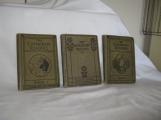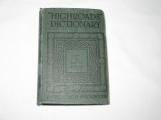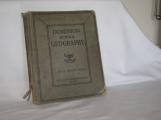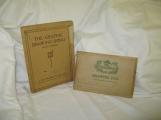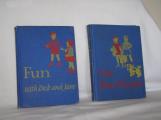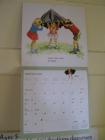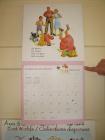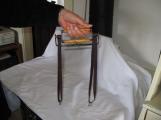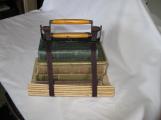1
The ReaderNo book was more important to the teacher and the student than the "Reader". These books were the only textbooks supplied free by the Department of Education. Besides being free these books were practically the only text book in the hands of the children.
All school work seemed to center around the reader - silent reading, oral reading, literature, memory work, story time, topics for composition and exercises for grammar.
Down through the years, over a quarter of a century, Canadians learned to read and study literature from a series of two readers " The Alexandra Series" , and "The Canadian Series". The pupils started with the primer in grade one, then advanced to the First Reader, Second Reader and so on until grade eight.
The Alexandra Series and The Canadian Series both came in very drab colors. All the pictures were in black and white. A lot of the stories and poems were about death, disaster and misadventures, with a few patriotic themes tossed in. Only a few poems and stories were written by Canadian authors.
In seems the "Little Reader" that was so important in the early school days had a short life. It was soon replaced by a series of readers. For example, each grade now had a least two readers per grade.
The Department of Education had very strict rules about the "readers". If a pupil lost or had the reader destroyed, he did not get a new one until he passed into the next grade. Teachers and school boards were to enforce this regulation. The teacher and her board were accountable to the Department of Education for every reader that was sent to the school. Semi-annual reports were to be sent to account for each reader. Before the start of a new school term the board was responsible for ordering what new readers would be required for the coming year. It seems like a lot of work and fuss over one little book, but that only proves what a valuable book "The Reader" was in its time.
The Alexandra and Canadian Series were followed for five years by the "Highroads to Reading Series". By 1936 the single reader method had advanced to a variety of readers for each grade. What a good feeling it was when you advanced to the next reader. These readers had colored pictures and great illustrations.
6
Fun with Dick and JaneAbout seventy years ago elementary school children read about a sister and a brother named Dick and Jane. These new Readers had a new look. They had a new energy, a liveliness of imagination and excitement. The stories used bright pictures and fun activities and fun adventures. Dick and Jane seemed like real children who loved to play, visit grandmother and grandfather on their farm, walk in the woods, play with their pets, and do many other things that normal children delight in doing. There were characters every child could relate to - Mom and Dad, the cheerful milkman, baby sister Sally, and their pets Puff and Spot. The stories taught them respect, the importance of values, the appreciation of nature and the importance of imagination and good cheer. These lessons the children could take out of their classroom and into the outside world.
These new Dick and Jane Readers not only had a new look but they had a new method. Dick and Jane used short, everyday words repeated over and over until all students could pick up on them. The books relied on sight-reading or "whole word reading" and repetition, using phrases like, "Oh, see. Oh, see Jane. Funny, funny Jane," and they ignored phonics. For this reason, these readers were used less and less as studies supported phonics as a more effective means of learning to read.
8
Dick and Jane CalendarThese calendars feature pictures and words related to the Dick and Jane Readers. The illustrations are bright and colorful. Each month features a little story similar to the Readers. These calendars are an asset to any classroom. The students in primary grades today are delighted with these calendars.
